Jezebel No, Your Adult Kids Don’t Have to Talk to You Whenever You Want Them To
Jezebel No, Your Adult Kids Don’t Have to Talk to You Whenever You Want Them To | Gizmodo Ruthlessly
Harrison Ford May Have Let Slip A Major Spoiler About The Force Awakens

The cast and crew of Doctor Who discuss plans for the next companion. Get a glimpse of Black Panther in action in Civil War. Supergirl casts another DC villain. Plus, looks at the midseason finales for Agents of SHIELD and Arrow, and new images from the Doctor Who Christmas special. So many spoilers!
Star Wars: The Force Awakens
Last Friday, the cast of the movie took part in a Twitter Q&A—and during his brief time behind the Star Wars Twitter account, Harrison Ford may have revealed a major duel between two characters in the film. When responding to a question about his favorite scene in the film, Ford responded with the below tweet:
The implication there is that, at some point, Rey and Kylo Ren will engage in a lightsaber duel. Bear in mind that was never really unlikely—there was, and still is, plenty of talk that Rey will become a Jedi-in-training by the film’s climax, and we already knew that she is present during the fight between Ren and Finn
Ant-Man and The Wasp
Peyton Reed discusses the tone of the film, and the relationship between Scott Lang and Hope Van Dyne:
The goal is to keep what we really liked for the characters in the first one, but to make it a much weirder movie. Part of thing that we’re going to explore, as shown in the comics, is how [the Ant-Man and Wasp] are such a great duo and partnership. Part of that, in any partnership, is how they relate to each other as people. Where will their personal relationship be at that point, and what will be their fighting style together?”
[/Film]
Star Wars Episode VIII
Lawrence Kasdan relates how different the following Star Wars films will be in comparison to The Force Awakens.
These movies will all be so different. [“Episode VIII” director] Rian Johnson is a friend of mine — he’s going to make some weird thing. If you’ve seen Rian’s work, you know it’s not going be like anything that’s ever been in “Star Wars.” You couldn’t have three more different people than J.J., Rian and [“Episode IX” director] Colin [Trevorrow]. Those movies will have the “Star Wars” saga as their basis, but everything else will be different. Then Phil Lord and Chris Miller are going to make the Han Solo film and I can’t guess what that will be like — and I’m writing it!
[/Film]
Captain America: Civil War
A promo picture of Captain America fighting Black Panther has made its way to the internet:
Supergirl
Italia Ricci has been cast as Silver Banshee, a DC comics villain who could kill people with the force of her screams. Ricci will play Banshee’s alter-ego Siobhan Smythe as a regular occurring role from Episode 14 onwards, as a hire at CatCo and quickly becomes a rival for Kara. [TV Line]
Once Upon A Time
Tony Perez will return to his role as Regina’s father Henry in the show’s 100th episode. [EW]
Doctor Who
Peter Capaldi says he doesn’t want a male companion to replace Clara:
With the best will in the world, I don’t want a bloke, because I’m frightened that they’ll give him all the action and I’ll be standing around spouting scientific gobbledygook... ‘Oh, Peter’s not up to chasing those Zygons down the corridor, let the chap do it.’ And that would be awful. I want to chase the Zygons!
While Steven Moffat discusses plans being formed for the role:
I’m beginning to have an idea of the kind of person, specific ideas but not a specific actress. A new companion gives us the chance to launch the show again. It began in 1963 with the story of Ian and Barbara and then in 2005 with Rose Tyler. Arguably it begins again with the story of Amy Pond. You can recruit new viewers when somebody else meets the Doctor. And I think we’ve got a really cool new idea about how to do that.
So it would be a new person.
Yeah but anything can change.
Would the dynamic of male and female companions work with Peter’s Doctor?
That’s still being discussed. We’re definitely looking for a different dynamic.
The BBC has released a new trailer for the impending Christmas special, “The Husbands of River Song”.
There’s also a bunch of new promo stills from the episode available—you can find more at the link. [Combom]


Arrow
Here’s a new trailer for the midseason finale, “Dark Waters”.
Scream Queens
A few pictures from the season finale, “The Final Girl(s)” have emerged online, seemingly revealing some of the titular final survivors of the series:
Agents of SHIELD
Team SHIELD plane a rescue mission, and Simmons confront Malick in two new clips from the midseason finale, “Maveth”.
Legends of Tomorrow
Finally, here’s a new poster for the series, as well as a new “Future” trailer with extra footage. [Spoiler TV]

Additional reporting by Gordon Jackson and Charlie Jane Anders. Image: Star Wars: The Force Awakens.
Revel in All the Amazing New Seconds of New Game of Thrones Footage
In HBO’s year-end “Look how awesome we were in 2015, we’ll also be awesome in 2016,” there are about four seconds of footage from season six of Game of Thrones. You can either skip to 2:15 in the video above, or see it in gif form below. Your choice.
First, we have Daenerys looking smudged and with unkempt hair:

And Ramsay riding in the snow with the flayed man banner of the House of Bolton behind him:

And Cersei embracing Tommen:

And that’s all she wrote! HBO teased a little by showing Jon Snow in the early “thanks for 2015” part of the video, which makes sense. They’ve been happily trolling
Contact the author at katharine@io9.com.
An Even Better Look at Doctor Who's New Sonic Screwdriver

Last week
http://io9.com/the-doctor-who...
First off, the BBC released a short video featuring Peter Capaldi mucking about with the new screwdriver—and unlike some of the more sleeker designs it’s used in the past, this one’s a bit flashy. TARDIS-blue and gold/aluminium metal bits, topped with a pulsating light that makes it look sort of very steampunk-like. Also, it’s like, the size of Peter Capaldi’s head.
You could probably bludgeon a few Daleks with it, let alone open doors and whatever else the Sonic needs to do.
But on top of that, they also released some concept art of the final design—or nearly final, because it looks like at one point the new sonic glowed red, which might have been a bit too garish on top of all the new coloring it has:


But it’s nice to see Capaldi’s Doctor getting his own screwdriver design, instead of running around with his predecessor’s (and then ditching it for most of this season in favor of some sonic sunglasses)—a design that’s now five years old.
What do you think about the new sonic design? Should there have even been a new sonic screwdriver? Let us know in the comments.
[Concept art via Doctor Who on Tumblr]
How Star Wars Helped Create President Reagan
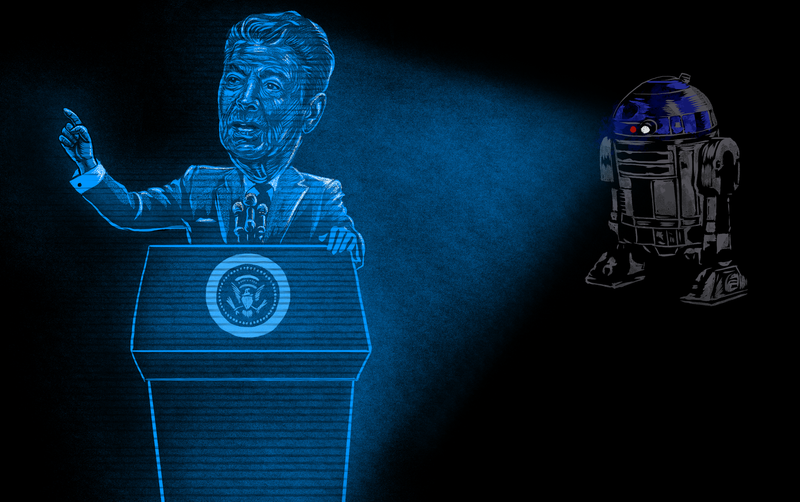
1. Star Wars starts out in the Wild West, the rough-hewn old frontier, and then it races upwards, soaring and expanding its scope, until at last it becomes World War II. It’s the story of drifters and dreamers, who find their purpose out in the absolute dead middle of nowhere, and end up leading the Revolution against an Empire. You can’t even imagine a more quintessentially American story than the original Star Wars.
George Lucas’ space opera arrived at a time when America was paralysed by doubt. The word “malaise,” which in 2015 sounds like some neurotic hipster affectation, was a defining term for the American psyche. A sitting president had been forced to resign in a dirty, ugly scandal, and meanwhile the United States had been forced to withdraw from Vietnam after a horrible war in which the U.S. seemed morally compromised. “Stagflation” gripped America’s economy, and we seemed to be unable to accomplish anything as a nation.
And to many observers, it seemed as though Star Wars was a pure jolt of American optimism and moral simplicity, that came at just the right time to make us feel like ourselves again. As the Washington Post said in 1983, the original Star Wars “helped close some of the psychological wounds left by the war in Vietnam. Star Wars tapped into inspirational depths that transcend political allegiance. It reflected politically uncomplicated yearnings—to be in the right, to fight on the side of justice against tyranny.”
George Lucas actually set out to create a polemic against American excesses, in which the evil Empire was supposed to be the United States. But Lucas also wanted to copy all the movies he consumed when he was growing up, including Westerns, Flash Gordon serials and heroic World War II films. And in copying films that were essentially propaganda for American military greatness, Lucas managed to distill them all down to the purest expression of our national mythology—which, in turn, helped set the stage for Ronald Reagan’s “morning in America” presidency.

2. In 1975, George Lucas was at a crossroads. He was supposed to direct Apocalypse Now, a gritty reimagining of Joseph Conrad’s Heart of Darkness set in the Vietnam War. Lucas had been trying to get Apocalypse Now off the ground for years, while his producing partner Gary Kurtz had been scouting locations. And now, his friend and mentor Francis Ford Coppola finally had the clout to get Apocalypse Now made, thanks to The Godfather Part 2. But Lucas had also spent the past couple years writing draft after draft of a project called The Star Wars. So he was torn about which movie to do first—and then Coppola told him it was now or never for Apocalypse Now.
As Chris Taylor writes in the book How Star Wars Conquered the Universe:
To Lucas’ friends, this seemed like the smart move. Lucas was, after all, an independent movie guy. It was his turn to make a big statement, something dark and gritty: his Chinatown, his Taxi Driver.
But Lucas decided he couldn’t put Star Wars off, so he let Apocalypse Now go, and Coppola ended up directing it himself. The reason, writes Taylor, was because Lucas wanted to do something for the kids, after he saw how his previous movie, American Graffiti, helped teenagers to straighten themselves out.
http://www.amazon.com/How-Star-Wars-...
In a 1977 Rolling Stone interview, Lucas explains more: “I saw that kids today don’t have any fantasy life the way we had. They don’t have westerns, they don’t have pirate movies, they don’t have that stupid serial fantasy life that we used to believe in. It wasn’t that we really believed in it... but we loved it. There’s nothing but cop movies, and a few films like Planet of the Apes, Ray Harryhausen films, but there isn’t anything that you can really dig your teeth into. I realized a more destructive element in the culture would be a whole generation of kids growing up without that thing.”

Long before Lucas started talking about Joseph Campbell and the Hero With a Thousand Faces, that pseudo-ethnography about myths and fairy tales, he was acknowledging that Star Wars had a huge debt to the films he grew up with, says Kathleen Moran, the Associate Director in the American Studies Department at UC Berkeley.
In fact, Lucas claimed that Star Wars would address the same ideas as his version of Apocalypse Now, just relocated to another galaxy in the distant past. He wanted Star Wars to be a story about an inhuman oppressor being defeated by a native uprising—and in early drafts, the Emperor was based on Richard Nixon, Moran points out.
Star Wars was intended to be “a commentary on Vietnam,” Taylor tells io9. Lucas “was trying to portray the Empire as the U.S. military.” This is much clearer in Return of the Jedi, the third film, where the Viet Cong finally show up “in the shape of the Ewoks,” says Taylor. “That’s absolutely what they were intended to be: the tiny primitive force that brings down a mighty technological empire.”

Lucas didn’t fully succeed in conveying the political themes he wanted Star Wars to express all along, until he made the prequel films years later—and perhaps as a result, those were much less watchable.
But meanwhile, Lucas was lifting from Westerns, pirate movies, classic adventure serials, and World War II dramas like The Dam Busters and Tora! Tora! Tora! As the 1983 Washington Post article says, Lucas’ main contribution in the original Star Wars consists of “rejuvenating Hollywood’s moribund action genres,” including “the swashbuckler, the western, the combat melodrama [and] the science-fiction serial.”
So the story of Star Wars, in Lucas’ mind, was something subversive and hyper-political about the overreaching of American power. But he was also determined to bring back the optimistic, sunny films of his youth—and he was much more successful in copying the unabashedly pro-American, devil-may-care adventures he had loved as a child (even if he claimed he didn’t believe in them) than in sneaking in some kind of anti-authoritarian message. Nobody ever walked out of the original Star Wars saying “Man, fuck America.”
3. In fact, nobody ever goes to a movie and identifies with the villain, except maybe if they’re played by Alan Rickman or Sigourney Weaver. And Star Wars, in particular, does a masterful job of making you identify with Luke Skywalker

Every red-blooded American dreams of being on the wild frontier, fighting Tuscan Raiders and Jawas for mastery of the land and control over the wayward droids. Or being a heroic drifter like Han Solo, who gives no fucks but has a not-so-secret heart of gold. Or leading the American Revolution against the Redcoats, which is pretty much the role that Princess Leia fits into the most, when she’s not being a reluctant damsel in distress.
By the time you get to the end of the film and there are spaceship dogfights and bombing runs, it’s become fully World War II—which happens to be the last war that America fought where pretty much everybody agreed we were in the right, and we unambiguously won.
Star Wars, the first movie, isn’t just joyfully escapist and thrilling—it’s also triumphalist and full of the promise that war can be fulfilling and worthy. Even if you ignore the fact that it ends with Luke and Han getting medals at a crazy awards ceremony that Taylor, a die-hard Star Wars fan, describes as “fascist.”

Among the moribund genres that Star Wars rescues is the war movie—during the decade prior to the original Star Wars, there had been basically no military action films, despite the Pentagon’s constant willingness to provide expensive troops and machinery to Hollywood for free, says David Sirota, author of Back to Our Future: How The 1980s Explain The World We Live In Now. You have Green Berets in 1968 and Tora! Tora! Tora! in 1970, but that’s basically it. The Vietnam War era was known more for anti-military films than ones which depicted heroic, valiant soldiers.
http://www.amazon.com/Back-Our-Futur...
“Star Wars is clearly about war,” says Sirota, but “because it was set in space and has a science-fiction setting, it was able to tap into those narratives that people had been used to before the Vietnam War—but in a way that didn’t overtly invoke the non-fiction military themes” that people had been reluctant to go to theaters for, immediately after Vietnam.
Of course, there were plenty of actual movies about Vietnam, including Apocalpyse Now, in the decade that followed. But, says Sirota, “Star Wars was a way that Hollywood figured out to tell heroic military stories, but in a way that didn’t strike so close to home, so soon after an actual war.” Star Wars “showed American military heroics in a setting that was safe because it was officially fantasy.”

After this, the Pentagon spigot was turned back on, and Hollywood was able to take advantage of U.S. military assistance in making pro-military movies, like Top Gun.
The genius of Star Wars is not just that it brings war back as a subject for movies—but it allows you to fantasize about being the “good guy” in a winnable war. To some extent, this was a prospect that was foreclosed in real life by the inventions of weapons of mass destruction such as nuclear weapons, that render any victory too messy and costly. Star Wars includes one such weapon, the Death Star, which is the focal point for all of Lucas’ messages about a “technological terror” that he brought over from Apocalypse Now. But in one of the movie’s many moments of wish-fulfillment, the Death Star turns out to have a fatal weakness, and its destruction makes heroic ship-to-ship combat the defining mode of battle in the Star Wars galaxy once again.
4. Most of us science fiction and fantasy nerds speak of 1980s movies with a special reverence

When you watch a movie from the 80s today, the pacing feels slower and the effects feel more crude than more recent films. But movies from Ronald Reagan’s presidency still have a lot in common with today’s films, in their focus on thrills, action and spectacle. When you watch a movie from the 1970s, though, it’s very different.
The decade preceding Star Wars is dominated by slower, more meditative science fiction movies. A ton of these films are dystopias, or post-apocalyptic worlds (in the vein of The Road, not Mad Max.) Instead of Arnold Schwarzenegger kicking ass, there’s Charlton Heston gritting his teeth through an endless series of messed-up futures. There’s seldom a happy ending, or an easy fix.
And Star Wars, more than Spielberg’s Jaws or Close Encounters of the Third Kind, created a new template for giant blockbuster movies. In these 1980s films, says Sirota, there’s not a lot of nuance. Things tend to be “good versus evil,” “us and them,” and clear moral lines. “You’re either on one side or your on the other,” says Sirota. “This is not The Wire.”

“You have to wonder, without Star Wars reinventing the blockbuster—along with Jaws—would we have had a Rambo?” asks Taylor. “Would we have had all those confident, muscular movies of the 80s?”
“Look at Star Wars—the original movie—and think about it in the context of 1977,” Taylor adds. “It doesn’t look like 1977. It doesn’t look like Jimmy Carter, and ‘malaise,’ and the bad times that America was going through. It looks like the 1980s. It’s optimistic, it’s militaristic. It’s armed to the teeth and naïve as hell.”
The “tentpole” movie would have become a huge phenomenon even if George Lucas had directed Apocalypse Now instead of Star Wars. Advances in technology would have guaranteed more space action, bigger explosions, greater spectacle. But Star Wars found a way to translate the uncomplicated optimism of mid-twentieth-century films to a new idiom—and that helped movies of the 1980s to be much more upbeat, and morally simple.
5. Pop culture shapes politics, as much as the other way around. Our movies, TV shows, games and other media help create our matrix of ideas about how the world works. Our fictional heroes represent our internalized images of the kinds of people we’d want to be in real life. Fictional victories make us believe that we can triumph over real-life problems, however intractable.

Ronald Reagan was running for president just as the marketing campaign for the second Star Wars movie was reaching fever pitch. Star Wars represented not just high-tech space adventure, but nostalgia—the original trilogy isn’t just set in a time “long, long ago,” but feels like a product of an earlier, simpler era. Reagan’s “Morning in America” campaign dovetailed perfectly with the sense of nostalgic optimism that Star Wars stood for.
As that 1983 Washington Post article makes clear, Americans were tired of feeling bad about themselves, and sick of defeatism, and Star Wars was a gateway drug to a new triumphalism. We could blow this thing and go home. We could be the good guys, with easily identified bad guys.
Reagan’s policies were explicitly connected to Star Wars on two occasions: Once, when he described the Soviet Union as an “Evil Empire,” and once when his missile-defense program was dubbed “Star Wars.” Both of these were more or less accidents, says Taylor. Reagan’s speechwriter has said he didn’t intend “Evil Empire” to be a Star Wars reference, but that speech happened just as the original Star Wars was showing on HBO for the first time, and people made the connection.

And using “Star Wars” to describe Reagan’s SDI idea was actually the Democrats’ idea—something they soon came to regret, because “Star Wars” doesn’t sound silly and dismissive, but rather awesome.
When you look the Empire through the prism of the Cold War, it does start to look like “a caricature of the cartoon of the Soviet Union,” says Sirota. “It’s this highly bureaucratized, un-democratic, soullessly technological, imperial administration. It’s easy to see the Empire as a proxy for that.”
“In the late 1970s, heading into the 1980s, that story of the Rebels against the Empire took on some political overtones,” says Sirota. “The idea of rebelling against this kind of faceless government was a theme in the movie, and depending on your political perspective,” says Sirota, you could view that as the Reagan revolution against Big Government. “I certainly think it tapped into the zeitgeist of that era.”
And Reagan, a former actor, was also keenly aware that this was a new era, in which movies were more immersive and spectacular than before. As Moran points out, Reagan famously said, “It is the motion picture that shows us not only how we look and sound, but more important, how we feel.” In Reagan’s America, we not only identified with Luke Skywalker and his friends, but also saw them as the best representations of who we really were inside.
And the purity of their struggle against evil was the greatest gift that Star Wars gave Ronald Reagan.
Top image: Artwork by Jim Cooke.
Charlie Jane Anders is the author of All The Birds in the Sky, coming in January from Tor Books. Follow her on Twitter, and email her.
That Time Kojima Deceived Everyone About Metal Gear Solid 2's Main Character
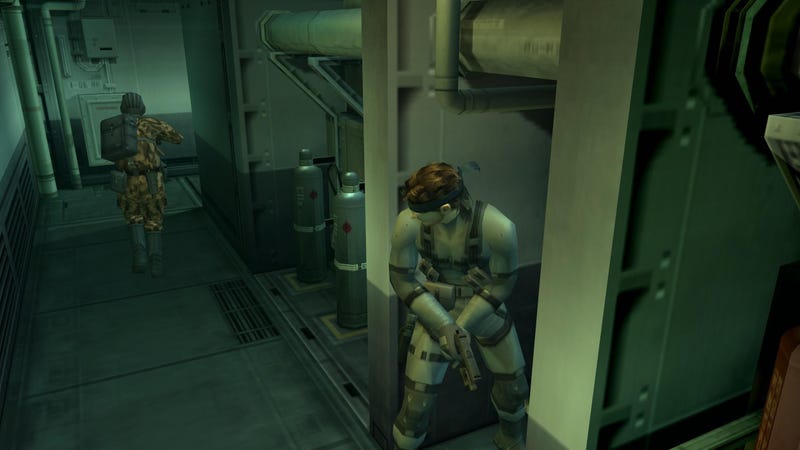
Metal Gear Solid 2: Sons of Liberty was one of the most anticipated games ever. 1998’s Metal Gear Solid blew everyone away with its attention to detail and imaginative world. The sequel, one of the first big PS2 games, would herald Solid Snake’s triumphant return. Snake came back...but not for the entire game.
In 2015, we know that Metal Gear designer Hideo Kojima enjoys tricking his audience. Metal Gear Solid V: The Phantom Pain was famously announced as a different game called The Phantom Pain, made by a team called “Moby Dick Studios.” Silent Hills was announced via trailer at the end of a short horror demo called P.T. But Kojima’s greatest sleight of hand may have happened in 2001, when he made the world’s Metal Gear fans play as a new character, Raiden.
Yes, that actually happened.
Development on Metal Gear Solid 2 began not long after Metal Gear Solid shipped, likely because they suspected Metal Gear Solid was going to be a hit. We know the exact timeline, thanks to a translated version of the design document.
- Late November ‘98: Analysis of PlayStation 2
- Late December ’98: Planning outline finalized
- Early January ’99: Begin character and mechanical design work, planning development
- February ‘99: Announce that MGS2 is under development for PlayStation 2
- March ‘99: Begin PlayStation 2 basic research (acquire tools)
- May ’99: Research trip to America (New York).
- E3June ’99: Begin full-scale development
- August ’99: Research trip to offshore plant
- Summer ‘01: Finish development
- Winter ‘01: Release
It’s wild to think there were only three years in-between games, when it took seven for Metal Gear Solid IV: Guns of the Patriots and Metal Gear Solid V: The Phantom Pain. (Technically, PSP’s Metal Gear Solid: Peace Walker arrived in 2010.)
The hype for Metal Gear Solid 2 began with the game’s very memorable E3 2000 trailer, which prompted the audience to literally burt into applause at the end:
This looked lightyears beyond anything else in games, let alone a follow-up to Metal Gear Solid. I remember being obsessed with the atmospheric water and constantly breaking glass. “How can games look better than this?!” Oh, Patrick.
Hype reached a fever pitch when a demo was bundled with Hideo Kojima’s mech action game, Zone of the Enders, in March 2001. Many folks, including yours truly, only bought Zone of the Enders because they desperately wanted a taste of whatever Kojima had in store. Fortunately, Zone of the Enders was also pretty great! (Same thing happened with Tobal No. 1 and Final Fantasy VII, remember?)
Both the demo and E3 2000 trailer focused on Snake navigating a ship full of guards in ugly, rainy weather. I must have played the demo a dozen times, looking for new details every time. You know, like watching the ice melt.
(Thanks to Diniz Games for the clip.)
Kojima premiered another trailer at E3 2001. This revealed more of the story, including a few villains, like Vamp. The trailer featured Snake sneaking, hiding, and shooting. You know, the things one expects from a Metal Gear Solid game.
While the game was nearly delayed, Kojima and company managed to finish the game in time for release in November 2001. The reviews of Snake’s latest adventure were stellar, encouraging everyone who played games to pick it up.
Here’s what GameSpot’s Greg Kasavin (now of Supergiant Games) wrote:
“It’s hard to believe Metal Gear Solid 2 is finally here. And though fans’ expectations for this sequel have been set almost impossibly high, both fans and skeptics alike will now discover that Metal Gear Solid 2 indeed lives up to its promises. It’s an undeniably impressive game that’s just as unforgettable as the original, and it’s longer too. Perhaps best of all, Metal Gear Solid 2 stays true to its roots. Though you’ll undoubtedly get swept up in the game’s plot and be dazzled by its cinematics, it’s the incredible story and the tense, enjoyable action at the heart of Metal Gear Solid 2 that make it so extraordinary.”
The game opened with same Snake-led section from the demos and trailers, culminating in a spectacular sequence where Revolver Ocelot hijacks Metal Gear Ray and the ship sinks. Snake is believed to have drowned, and the game picks up with someone swimming underwater, reminiscent of the opening to Metal Gear Solid. The first codec even has the person identifying themselves as Snake.
Soon, however, their codename is changed from Snake to Raiden, and as they reach the surface of a location called Big Shell, they finally remove their mask.
“A-ha,” players said at the time. “Kojima is fucking with me! Making me play as another character for a little while before eventually returning to Snake.”

He was definitely fucking with everyone, but it was even more extreme. You play as Raiden for the remainder of the game, a shocking twist that was never hinted at. Kasavin’s review claims something going on but never says what:
“This review will not disclose any specific plot points, since you’ll enjoy the game so much more if you experience it all firsthand. As such, if you take just one thing away from this review, then it should be this: Do not let anyone reveal the plot of Metal Gear Solid 2 to you, whether intentionally or inadvertently, before you play the game yourself. In fact, you’d even be better off not reading the manual that comes packaged with the game, as it includes more information than you’d probably like. You’ll learn how to play the game in context anyway. If you do happen to hear something about the story, don’t worry. Even if someone told you what The Matrix was really about, that still wouldn’t replace the experience of watching the movie. It’s a similar case with Metal Gear Solid 2, a game that can’t suitably be described in words, even if its plot twists can.”
GameSpot wasn’t alone. Here’s how IGN’s David Smith danced around it:
Of course, it’s hard to discuss issues of Metal Gear’s plot and character development without spoiling major surprises, but it’s possible to make a few points in general terms. To start out, the point that should be kept in mind continually: at its best, this game has as much emotional impact as it ever has visually. It is still an affecting narrative. But it doesn’t live up to its best standard all the time, and when it falls, it falls hard, creating the game’s most significant problems. The problems I have with the tale being told are two-fold — some of them have to do with exactly what I’m seeing and hearing, and others have to do with the way that is presented. Form and content, in other words, although curiously enough both don’t often get it wrong at the same time.
It’s hard to imagine how that’d play out in 2015. Would reviewers have kept a lid on such a huge twist? How would players have reacted? The Internet existed in 2001, but it wasn’t the reactionary, social media-laden landscape it is today.
The website Spong claimed to have details on the “eve of its American release.”
“On the eve of its American release, a new rumour has surfaced about the hotly-anticipated Metal Gear Solid 2: The Sons of Liberty. Though this kind of rumour-mongery can be expected of any game so shrouded in mystery, it has emerged that you do not play as Solid Snake for a considerable portion of the stealth thoroughbred. Apparently, a new character called Raiden will become the main playable character for the large part of the game.”
One of the forum threads I found came from IGN, titled “We were all cheated—-MGS2 was a marketing lie!!!” It was a mixture of confusion and sadness.



At least we know message boards haven’t changed that much.
But why Raiden? Why the whole game? We actually plenty of insight into that.
Metal Gear Solid 2’s goal was to attract female players. Per the design document:
We will have the player control a different character from Snake, so that they can enjoy the game’s story even if they have not played the previous game. They will be able to empathize with this character regardless of the fact they are new to the series.
[...]
With Raiden (someone appealing to women), instead of Snake, as the main character, we will have a character in which women can more easily empathize. He is the antithesis of the older, hard-boiled image of Snake.
In Geoff Keighley’s “The Final Hours of Metal Gear Solid 2” feature for GameSpot, Kojima and other developers explained how Raiden came about.
Kojima wanted to keep the conversational CODEC sequences, the spot where much of the storytelling happens in Metal Gear games. (Cut scenes, at that time, tended to be shorter.) It didn’t make sense for a veteran like Snake to be spending so much time talking into his ear, so Kojima needed someone new.
Per Keighley’s story:
“The issue of likes and dislikes was a major topic of discussion among the core team for Metal Gear Solid 2, most of whom returned from the first game and many of whom have worked with Kojima for nearly a decade. Some liked the idea of Raiden; others were a little taken aback by Kojima’s decision to introduce a new playable character. Yoshikazu Matsuhana, the assistant director for the project, who started at Konami as a game tester on Metal Gear: Solid Snake, was one of those who questioned the idea. ‘I wasn’t sure this weak-looking guy was going to be well received by the fans,’ he says. ‘But we all trust Mr. Kojima because he has so many hits under his belt. He is basically allowed to do what he wants.’
Matsuhana was right, by the way.
But Kojima clearly didn’t care, as evidenced by this telling quote:
“Some members of the team expressed concern that players would want to play Solid Snake throughout the entire sequel, but Kojima says he was determined to bring a secret new character to the game. ‘Was I scared that people might not be happy about the new character? Not really,’ he says. ‘In a sequel you have to meet people’s expectations, but you also sort of have to go against them and deceive them I think. This is my Metal Gear, and I can destroy it if I want to.’”
Raiden became somewhat of a punching bag for Kojima in Metal Gear Solid 3: Snake Eater. Though the game is actually a prequel, the character Major Raikov has a strong resemblance to Raiden. You can choose to kill him or let him live.
Prior to the release of Metal Gear Solid IV: Guns of the Patriots, Kojima told 1UP he still loved Raiden, even though he’d proven deeply divisive amongst series fans:
“The thing is, I don’t hate him. I fool around with him because I like him very much. Me and my team like him, we spent a lot of time putting him together and we like him. But the fans ended up not liking him, and that I accept. Since I want my fans to enjoy my games, then I myself, who came up with the character said “Why not fool around with him?” I like the precedent of some talent agency, and try to cast him in some cool role in a movie [Metal Gear Solid 2: Sons of Liberty], but it just didn’t work. That’s why now I’ll make him the clown in the movies.”
According to Kojima, Raiden was well-liked in Japan:
“The whole thing with Raiden/Raikoff in MGS3 is that there are actually many people in Japan who like Raiden. There are people who want to play as Snake, but there are also people who want to play as Raiden as well. But I wasn’t going to do the same thing as MGS2, where you get to play with Raiden, because I know fans outside do not like him. That’s why I basically put Raikoff in the game so you could see Raiden, and also offered the mask, so people who wanted to play as Raiden can have Snake wear the mask.”
He teased that “once you finish playing MGS4, you’re going to like Raiden.”
That’s why Raiden soon looked like this:

Yep, pretty badass.
Raiden would even go on to star in the wildly underrated action-oriented Metal Gear Solid: Revengence from Platinum Games. Last we saw of Raiden, he’d made up with the love of his life, Rose, and seemed to be happy.
You can reach the author of this post at patrick.klepek@kotaku.com or on Twitter at @patrickklepek.

That Actually Happened is a weekly series at Kotaku in which we highlight interesting moments in gaming history. So far, we’ve revisited when Sonic kissed a human, a live game show on Xbox 360, and Sony throwing a God of War party with a dead goat. If you have any suggestions for future entires, please let us know in the comments below!
Adequate Man Hot Wiring A Car, And Other Tales Of The Worst Trouble You Ever Got Into | Jezebel Vide
An Unlikely Alliance Forms on Yet Another Awesome Episode of Ash vs Evil Dead

The deliciously blood-filled fight scenes in “The Killer of Killers” might be the series’ best yet—though it’s hard to declare anything the best on a show that has so much going for it. This week, the fun continues as Ash and company remember once again that there’s no such thing as a nice, quiet breakfast.
First, though, we catch up with Amanda and Ruby, who pull into the brujo’s farm just as Ash, Pablo, and Kelly are leaving. Before they can start up the chase, Ruby is confronted by a fiery skeleton, who barks “Ruby! You double-crosser! The others will never let you get the book for yourself,” before pulling her into the fire. Amanda thinks Ruby’s a goner—but we know. Come on, we ALL know! Ruby will be back, no doubt.
So will Ash’s hand, which is missing from Ruby’s car when Amanda hops behind the wheel. No time to look for it (again, it WILL be back!), because she’s not about to let Ash get away from her again. Lucky for her, he’s dawdling in the Western Moose, trying to convince the waitress to let him pay for pancakes with a bathroom romp with “a genuine beef stud.” She ain’t buying it—but Ash is saved, sorta, by Amanda, who bursts in just as he’s assuring himself “I’d do me all day long” in the bathroom mirror. Of course, they brawl, and of course Ash takes a pause to ogle her cleavage and admire her perfume (“Is that ... lavender?”)
After everything, Amanda just doesn’t get it—until she sees Ash in action. “I’m not a killer. I kill killers!” he protests. And she’s finally on his side once the evil Deadite wind crashes into the restaurant, yielding some awesome kills (ice-skate to the skull!) and Deadite-ing both Amanda’s boss, who’s rushed to the scene, and the unamused waitress in the process. Enter Kelly and Pablo—who’ve just had an awkward moment about Possessed Kelly’s attempted seduction, because Un-Possessed Kelly prefers to keep Pablo in the friendzone—as Ash’s backup.
Earlier, he was worrying about bringing them to their next stop, the cabin (with a side mission to Ash’s newly-sober buddy Lem’s militia stockpile, which should yield more adventures), but with every fight it seems like Ash really realizes how important they are to him. Though Pablo cautions Kelly about being motivated by revenge, she’s delighted to mash the waitress’ head into the restaurant’s meat slicer, which isn’t even the grossest moment in this episode (also contenders: “A new member for my fan club!”; “What, you never saw a guy with a chainsaw arm before?”; exploding head; etc.)
This breathlessly-paced episode ends with Amanda joining Ash, Kelly, and Pablo in their quest to return the book to the cabin—fighting Deadites, and most likely Ash’s hand, and definitely Ruby, along the way. And what’s the deal with Lem, anyway? We’ll surely find out next week.
(Fave exchange: “This guy’s behind everything.” “Say whaaat?”)
Looks Like The Iron Fist TV Show Is Really Happening!

Everyone’s been wondering if Netflix is really going to make a TV show based on Iron Fist, the comic about a blond guy who goes to Asia and becomes a martial-arts master. While Daredevil and Jessica Jones have been huge hits, there have been repeated
Comicbook.com is reporting that Scott Buck—whose eclectic resume includes Executive Producer credits on Dexter and Six Feet Under, as well as scripts for Rome, Everybody Loves Raymond, and more—has been put in charge of the series. It’s the first real good bit of news for Iron Fist since was announced as one of the four Netflix series that would form Marvel’s Defenders crossover.
But now that there’s that out of the way, when will we actually get to see Iron Fist? It’s hard to say. We’ve got Daredevil Season 2 early next year, followed by the currently-filming Luke Cage later in the year. The success of Jessica Jones makes a second season seem increasingly likely... could we see Jessica Jones season 2 in early 2017, followed by a mid-t0-late Iron Fist debut in 2017? It’d be a bit tight if the characters were to potentially appear
At least it really is a little bit of good news for Iron Fist.
[Via Comicbook.com]
Header Image Credit: Immortal Iron Fist #1 variant cover by Gabriele Dell’Otto.
This Week's TV: Mark Hamill Leads The Greatest Villain Team-Up In TV History!

Plus Robot Chicken is back with more weird superheroes! There are midseason finales of all your favorite shows. A killer is finally unmasked on Scream Queens! Neon Joe, Werewolf Hunter arrives in a four night miniseries event! But will Felicity Smoake go up in gas on Arrow? It’s this week’s TV!
Tonight
Supergirl (8PM, CBS)
“Kara and her friends must rely on their inner strength and courage when an earthquake strikes National City. Also, Alex’s mistrust of Hank reaches a breaking point when the earthquake traps them in the DEO with Jemm (Charles Halford), a powerful alien escapee.”
Supergirl vs. Jem?! No, it’s JEMM! The evil Saturnian analogue to the Martian Manhunter! He’s truly crustaceous. Truly, truly, truly, crustaceous….
Neon Joe, Werewolf Hunter (12AM, CARTOON)
A four-night special event, co-starring Damien Young, AKA, Bus Driver “Stu” Benedict from the Adventures of Pete & Pete!
_______________________________________________
Tuesday
The Flash (8PM, CW)
Trickster! Captain Cold! Weather Wizard! The first Rogues team-up you’ll actually care about!
The Muppets (8PM, ABC)
“The gang is preparing for the annual “Up Late” live Christmas special with, special guest Mindy Kaling. Animal is in charge of tinsel, Sweetums hangs the lights, Sam Eagle strategically places the mistletoe - everything is in order. Or so it seems. Meanwhile, Miss Piggy offers relationship advice to Fozzie, which forces her to reevaluate her relationship with Kermit. Yolanda rigs the Secret Santa gift exchange, and Echosmith performs at the crew’s Christmas party.”
“Everything is in order. Or so it seems.” Sounds ominous!
Scream Queens (8PM, FOX)
The killer is finally unmasked in the Scream Queens season finale!
iZombie (9PM, CW)
Liv, Detective Babineaux, and Ravi, work together in solving the murder of Chris Allred (guest star Jay Hindle), who was a high school shop teacher by day, and a vigilante crime-fighter named “The Fog” by night. Liv gets into trouble while on superhero brains and becomes a little too much for Clive to handle. Meanwhile, Major (Robert Buckley) has an eye opening conversation with a new friend. Lastly, Blaine (David Anders) forces Liv to do the unthinkable.
Some iZombie trivia: “Chris Allred” is, of course, a portmanteau of writer Chris Roberson and illustrator Michael Allred, the creative team behind the iZombie comic book series!
Agents of SHIELD (9PM, ABC)
An interplanetary rescue mission on a planet of evil! Bring ‘em home alive.
______________________________________________
Wednesday
Arrow (8PM, CW)
Trapped under glass, in a set piece reminiscent of The Wrath of Khan’s tear jerking finale…things look pretty dire for Felicity this week. And it’s our final episode of the year!
I’ll try to add some levity:
Q: Why is Oliver like a sad noble gas?
A: All his friends argon…
Supernatural (9PM, CW)
“Amara (guest star Emily Swallow) unleashes her power on the local townspeople as she issues a shocking challenge. Dean tries to better understand the hold Amara has on him, while Sam and Crowley (Mark Sheppard) come up with a plan that could have disastrous consequences.”
Star Wars: Rebels: Legacy (9PM, DISNEY XD)
The working title for this episode was “The Secret of Prisoner X”, so…spoiler?
American Horror Story: Hotel (10PM, FX)
The Countess is getting married…but will she live through the honeymoon?!
South Park (10PM, COMEDY)
Found this synopsis on a Chinese website:
It is time for final justice and PC Principal comes down with complete vengeance. “The citizens of South Park feel safer when armed,” reads the synopsis of “South Park” Season 19, Episode 10 finale.
Whoa! Followed by a new Moonbeam City.
_______________________________________________
Thursday
The Vampire Diaries (8PM, CW)
Someone’s eating mall Santas in the Christmas midseason finale!
The Originals (9PM, CW)
“When a dangerous affliction threatens to expose one of her siblings, Freya (Riley Voelkel) searches for a way to reverse the crippling curse even as she finds herself the target of The Strix’s latest plan. Elsewhere, Klaus (Joseph Morgan) keeps a watchful eye over Cami (Leah Pipes) while she attempts to help Detective Kinney (guest star Jason Dohring), whose life has begun to spiral out of control as a result of Lucien’s compulsion. Meanwhile, a confrontation with Marcel (Charles Michael Davis) causes Vincent (Yusuf Gatewood) to reevaluate his decision to stay out of witch business, and Hayley’s (Phoebe Tonkin) attempt at a quiet Christmas with Jackson (guest star Nathan Parsons) and Hope results in an unexpected surprise.”
Midseason finale!
Haven (10PM, SYFY)
“Nathan and Dwight race to rescue Audrey from Croatoan, but the consequences of Duke’s dark destiny wreak havoc on their plans. Meanwhile, Vince contemplates an unusual sacrifice.”
_____________________________________________________
Friday
Roald Dahl’s Esio Trot (6PM, LIFETIME)
Dame Judi Dench! Dustin Hoffman! James Corden! Roald Dahl’s Esio Trot makes its US television debut.
Gremlins, Gremlins 2 Double Feature (8PM, EL REY)
El Rey is here to help you get into the Christmas spirit. And stay up till 4AM for Lucio Fulci’s City of the Living Dead!
Grimm (9PM, NBC)
Nick and Hank investigate a string of targeted attacks on Wessen small-business owners! Can the Wesen unionize in time?
Z Nation (10PM, SYFY)
Penultimate episode!
_______________________________________________
Saturday
Pokemon (8AM, CARTOON)
Ash gears up for his next gym battle against Olympia! Team Rocket turn up, naturally.
Power Rangers: Dino Charge (12PM, NICKELODEON)
The Rangers fight Greenzilla, an outlaw carnivorous plant!
Ash vs the Evil Dead (10PM, STARZ)
Back in the woods!
_______________________________________________
Sunday
The Librarians (8PM, TNT)
“The Clipping Book sends the team to a high-tech research facility, where the researchers have been turned into mindless monsters by some bizarre power source in the center’s lab. When they disconnect the artifact, however, they find themselves stuck in a time loop.”
The Last Man on Earth (9:30PM, FOX)
Fall finale!
Robot Chicken Christmas Special (12AM, CARTOON)
The best yet?
In The Librarians, a Classic Figure From Literature Goes Digital

This could just be me, but there was something missing from this week’s Librarians. It just didn’t seem as tightly packed and plotted as usual. The time between the team getting the assignment and figuring it all out stretched out too long.
Spoilers for “And the Image of Image” follow.
I will fully admit that part of my general “meh” feeling this week was the twist. In my junior high school days, The Picture of Dorian Gray was my absolute favorite book. And Oscar Wilde was a particular fascination. And I did not feel that this episode added any value to it.
The plot is basically that Cassandra and Jake are in London doing Prospero research, when a girl flies through the air like she’s been hit by a car. Except she hasn’t, another person has. And someone else died from a cocaine overdose with no drugs in his blood work. And so on and so forth. I’m not impressed with how long it takes our brilliant team to figure out that this is what’s happening.
Other things I’m not impressed with: Why isn’t Cassandra sent home once she’s become magically drunk? It’s awfully convenient that Dorian Gray literally just introduces himself to Cassandra with that name. Dorian’s personality is just ... drab. (Also, he’s not blond. Inexcusable.) And in a season where we’ve been running into fictionals every which way, we’re just making the whole Picture of Dorian Gray a nonfictional story now?
Plus, I’m not sure I understand this Dorian’s motivations. In the novel, the painting ages and reflects Dorian’s sins. He’s not suddenly immune to hedonistic pursuits. That’s kind of what he lives for. Why did this version create a picture that means he gets none of the effects of drink and drugs? (And, he’s not passing off the negative effects. Cassandra gets drunk not just hungover.) The writers also turn Dorian into the usual “woe is me, mortality is wasted on the mortal” immortal. Dorian’s all about himself, not others. That’s the point.
There were a few moments that reminded me why I love this show. Jenkins, as always, is my forever favorite. Especially when he can’t remember when he was last in Dorian’s club. Jake and Ezekiel’s improvised defibrillator—and the usual banter while they figured it out—was fun. I even liked the way Ezekiel and Cassandra figured out how to defeat Dorian’s enchantment.
I never want to sit through Dorian Gray moralizing about selfies again. At the very least, Dorian talking about narcissism should have been deeply ironic. And it just wasn’t. It felt like an honest opinion of the show. Which was weird and condescending. I love this show, but this was not a strong outing.
Contact the author at katharine@io9.com.
Unprecedented Image Shows a Dolphin's Echolocated Impression of a Submerged Human
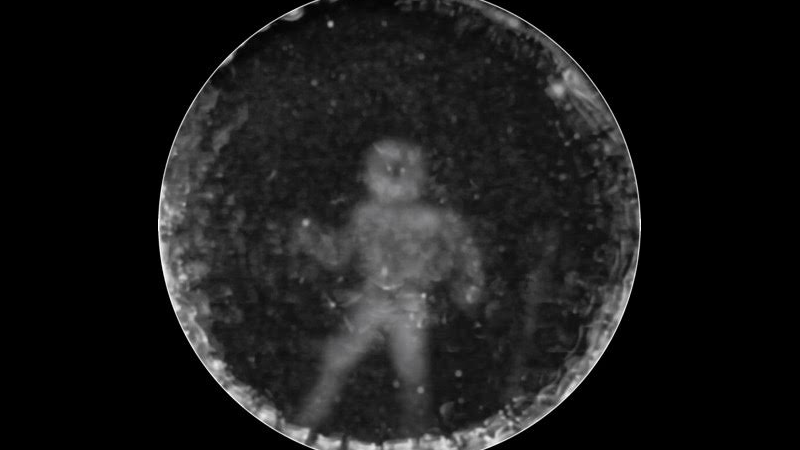
In a world’s first, researchers from the US and UK have created an impression of a submerged human as recorded by a dolphin’s echolocation.
To do it, a team led by Jack Kassewitz of SpeakDolphin.com used an imaging system known as a Cymascope. The system, developed by John Stuart Reid (who also assisted with the project), made it possible to record and isolate dolphin echolocation sounds directed onto specific objects, and then create 2D images from those sounds. A computer then converted those images into 3D, which allowed the researchers to 3D-print robust, real-world models.
“We’ve been working on dolphin communication for more than a decade,” noted Kassewitz in a release. “When we discovered that dolphins not exposed to the echolocation experiment could identify objects from recorded dolphin sounds with 92% accuracy, we began to look for a way for to see what was in those sounds.”
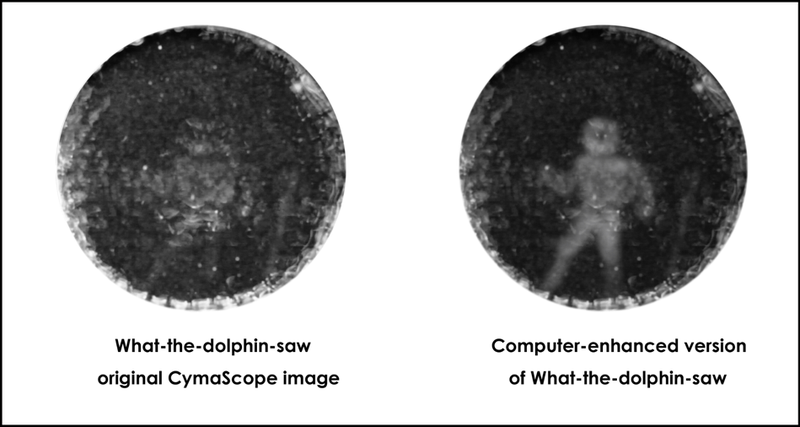
(Credit: SpeakDolphin.com/Cymascope Laboratory)
For the experiment, a female dolphin named Amaya directed her sonar beams at a submerged diver, while a hydrophone captured the ensuing echos. To avoid added “noise,” the diver, Jim McDonough, swam without a breathing apparatus to make sure no bubbles would adversely affect the results. As Amaya scanned McDonough with her high frequency sound beam, the CymaScope imprinted sonic vibrations within the water medium.
In addition to the diver, the researchers also had Amaya direct her sonar at a flowerpot, a cube, and a plastic “+” symbol.
“We were thrilled by the first successful print of a cube by the brilliant team at 3D Systems,” said Kassewitz. “But seeing the 3D print of a human being left us all speechless. For the first time ever, we may be holding in our hands a glimpse into what cetaceans see with sound. Nearly every experiment is bringing us more images with more detail.”
Looking ahead, the team would like to determine if and how dolphins may be sharing these echolocation images as part of an intra-species sono-pictorial language.
[ SpeakDolphin.com | h/t Discovery News ]
Email the author at george@gizmodo.com and follow him at @dvorsky. Top image by SpeakDolphin.com/Cymascope Laboratory
No One Gives Christmas Presents Like The Last Man On Earth

Armed with a billion dollar spending limit, the characters on The Last Man on Earth spent the latest episode conducting a little “Secret Santa.” That just so happened to be the title of the episode, too, and things went from awesome, to awkward, to incredibly sweet.
To get everyone in the Christmas spirit, Carol decorated the house to such an extent, Gail said it looked like Santa Claus ate the Rockefeller Center tree and crapped it all over the walls. It was not a compliment, even though Carol took it as such.
After everyone drew names, Tandy—who is still trying to win over Phil—gave him an early gift. Tandy had drawn Erica’s name and traded it to Phil, being as Phil was long overdue for some brownie points with his baby-mama-to-be. Tandy, in exchange, got his own name. Bummer.
When the Secret Santa began, it started with Erica getting Carol’s name. She got her not only a chair from Oprah’s studio (did she drive to Chicago for it?) but Jennifer Lopez’s famous green Grammy dress. Todd drew Gail, his new secret fling, and got her a hot rod made famous by ZZ Top. Tandy got himself a yacht, which he decided to blow up because he could. Carol gave Melissa a pair of Jimmy Choo boots she wanted, but they were bedazzled. And though we all expected Melissa to freak out over Carol getting this wrong, she didn’t. Melissa is changing.

We saw that in her gift to Todd, whom she broke up with last week. She got him a sash, scepter and crown because Todd never got to go to his own prom. Gail then got Phil, but didn’t get him anything and, finally, it was Phil’s turn for Erica.
Tandy expected Phil to give her the Hope Diamond, which he had stolen and given to him for her, but Phil didn’t. Instead, he got her an ultrasound machine so she could see her baby. This was incredibly sweet but, classic Tandy, he was pissed at being stubbed by Phil yet again.
The moment was so touching in fact, it made Melissa change her mind about Todd. She later got down on one knee and proposed to him. Just in that instant, Phil had something go wrong with him, he fell to the floor and the episode was about to end.
Meanwhile, as all this was happening, Phil’s space-bound brother Mike was getting ready to end it all and blow himself out into space. He changed his mind at the last minute though but it was too late. The episode ended with Mike being shot into space tethered only by a small rope.
“Secret Santa” didn’t have a ton of laughs, but it had really smart and fun writing with the gifts and a few nice cliffhangers as we lead into next week’s mid-season finale.
Contact the author at germain@io9.com.
Happy 100th Birthday to Leigh Brackett, the Queen of Space Opera!

In the Golden Age of science fiction, male authors far outnumbered their female counterparts. C.L. Moore was a notable break from the largely male-dominated field, but she wasn’t the only one to put fantastic tales to paper. Another notable author of the day was Leigh Brackett. She began writing during the early days of the Golden Age of SF before gaining prominence as a novelist and screenwriter in Hollywood, with several notable films to her credit: The Long Goodbye, The Big Sleep and Star Wars: The Empire Strikes Back.
http://io9.com/they-mocked-he...
Brackett was born on December 7th, 1915 in Los Angeles, California to a family of declining fortune. Her early life was met with hardship early on in 1918 when her father passed away, one of the many casualties of the global flu epidemic. After that, her family moved quite a bit, and Brackett later recalled that she had a haphazard education as they travelled the country before settling down. Her love of science fiction came when she was 8 years old, after picking up a copy of Edgar Rice Burrough’s second Barsoom novel, The Gods of Mars.
http://www.amazon.com/Gods-Mars-Edga...
She later said that she knew from that point what she wanted to do: “I was never the same after that. Suddenly, I became aware of other world out there and then, from that time on, I was destined to be a science fiction writer.”
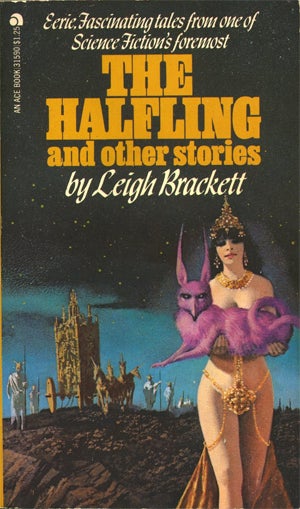
Headstrong and described as a tomboy, Leigh Brackett was a rebellious daughter. Her mother, who never remarried, was a polar opposite of her daughter: Described as a slight, beautiful woman, her daughter was athletic, tall and constantly at odds with her mother. Brackett was educated at an all-girl’s private school in Santa Monica, where, at the age of 13, she had begun to write seriously. Through her school, she was introduced to the theater world, where her love of writing was reinforced by her successes with plays. While she was offered a scholarship, she never continued on to college, unable to afford the remainder of the cost. In its place, she opted for a career in writing.

Brackett remained close to science fiction. In 1939, she joined the Los Angeles Science Fiction Society, where she met other science fiction authors who were just breaking into the field, such as Ray Bradbury and Robert Heinlein, who would remain close personal friends for years to come. As she became more involved with the science fiction community, she began writing short stories for submission to the magazines from which she’d received her early doses of science fiction— Argosy and Adventure—only to earn a number of rejections. It wasn’t until she met fellow authors Henry Kuttner (and later, C.L. Moore), who offered advice and valuable connections within the field, that Brackett’s career as a writer began. Her work was heavily influenced by the planetary romances of her childhood, and she wrote numerous space opera adventures. In 1940, she sold her first two stories, “Martian Quest” and “The Treasure of Ptakuth,” to John W. Campbell Jr.’s Astounding Magazine. Her luck with Campbell didn’t last, after her sale of “The Sorcerer of Rhiannon” to the market in 1942. Brackett’s first love was the planetary romances, and Campbell simply wasn’t interested, so she started looking for other homes for her work. She found that magazines such as Planet Stories, Startling Stories, Thrilling Wonder Stories, Super Science Stories and others would be happy to publish her adventures throughout the 1940s.
http://www.amazon.com/Amazon-Bracket...

Her mother and relatives weren’t supportive of her interest in science fiction, or her writing in the genre. An aunt once asked her: “Why don’t you write nice stories for the Ladies’ Home Journal?”, to which Brackett replied: “I wish I could, because they pay very well, but I can’t read the Ladies’ Home Journal, and I’m sure I couldn’t write for it.”
While she was beginning to find some successes in the science fiction markets, Brackett found that she had to find other sources of income, and began to write detective stories. Her first sale was in 1942, a short story called “Murder in the Family,” to Mammoth Detective, followed by a number of other sales in the market. While science fiction authors had trouble through the next decade trying to publish outside of the magazine market, mystery authors had no such barriers, and the hardcover book was in Brackett’s future. Her first novel, No Good From a Corpse was first published in 1944, where it attracted the attention of Hollywood director and producer Howard Hawks. A friend at a bookstore knew that Hawks would continually search for new material, frequently buying stacks of mystery novels, and added her book to the pile. Intrigued by her story, Hawks hired Brackett to write the screenplay for an adaptation of Raymond Chandler’s novel, The Big Sleep, which she co-wrote with William Faulkner.

Working in Hollywood was more lucrative than writing for the SF magazine market, and she would continue to work with Hawks over the next couple of years, largely taking a break from science fiction. When she was having a hard time finishing a novella for Planet Stories in 1946, Lorelei of the Red Mist, she asked for help from fellow author Ray Bradbury, who completed the story, and it was published jointly. In the same year, Brackett married fellow science fiction author Edmond Hamilton, with Bradbury as their best man at the ceremony. Unlike their friends C.L. Moore and Henry Kuttner, whose work was indistinguishable following their marriage, Brackett noted that the pair didn’t collaborate well together. Brackett frequently wrote screenplays and short fiction, while Hamilton eventually found work writing for DC comics, along with his own short fiction.
http://www.amazon.com/Lorelei-Red-Mi...
Brackett’s hiatus from science fiction only lasted a couple of years before she returned, writing a series of novels throughout the 1950s: The Star Men, Alpha Centauri or Die!, The Big Jump and possibly her best known novel, The Long Tomorrow. In addition to science fiction, she continued to write detective and western stories, alongside several other screenplays, for films such as Rio Bravo, Hatari, El Dorado, Rio Lobo and The Long Goodbye.
http://www.amazon.com/Long-Tomorrow-...
Brackett’s final movie screenplay was a mix of her entire background, between epic space opera and cinema: Star Wars: The Empire Strikes Back.

Hired by the first film’s director, George Lucas, the move seemed to be a perfect fit: Brackett and her late husband (Hamilton had passed away in 1977) had written extensively in the space opera subgenre, which was a huge influence on Star Wars. Brackett, delighted by the invitation, was responsible for the first draft of the screenplay, completing it in 1978, shortly before she died of cancer, never to see her final work on the big screen. Had she not died, she would have written one of the first Star Wars spinoff novels about Leia Organa, alongside books about Han Solo and Lando Calrissian.

Brackett was an early trailblazer for women in the genre. After learning the ropes, she recalled little opposition to her writing, with only one instance where she pulled her stories out of a market due to sexism: Campbell’s Astounding. But she just moved on to other markets, where she left a long lasting impact in the genre, both in print and on the silver screen.
Brackett was a rare hybrid of types in the writing world: While some authors had toiled away for the pulp and magazine markets throughout the 1950s, she found that success in a wider range of fields, dipping into screenwriting and mystery novels, producing several exceptionally well-known works. Her love for science fiction, however, was something that remained close at heart, and she noted in interviews that she appreciated the science fiction fan environment, having made a large number of close friends in the California circles: “Everybody in the field welcomed me with open arms. All the other writers and editors and everybody were just great because we were such a small clubby group in those days that if you found another nutcase that you could talk to, it was great.”
This article was originally published at Kirkus Reviews.
When Will We Finally Get To See Person of Interest Season 5?

Person of Interest is one of the best science fiction TV shows of the past decade—or of all time, really. So we’ve been waiting anxiously to see the fifth season, especially since we heard
CBS announced its spring 2016 schedule last week, and Person of Interest wasn’t on it. Season five is probably more or less in the can at this point, so this can only mean a couple of things: Either CBS is planning to start airing Person of Interest in March or April, once some of its other shows have run their course—or it’s being saved for the summer, now that CBS has canceled summer shows Under the Dome and Extant.
A lot of people are assuming the latter, that Person of Interest is being turned into a summer series. (And maybe there’s a chance for it to get renewed, if it does better in the summer months than Dome and Extant were.) But there’s no official explanation. We reached out to a rep from CBS, who says there’s no official word about the future of the series, and anything you hear at this point is just speculation. Either way, fingers crossed!
Contact the author at charliejane@io9.com and follow her on Twitter @CharlieJane
10 Brilliant Science Fiction and Fantasy Stories That You Probably Haven't Read Yet

Nigerian author Wole Talabi has posted his list of the 10 best African science fiction and fantasy stories of 2015. They include Afro-cyberpunk, a reimagined fairy tale, magical realism, and far-future SF. Definitely worth checking out! [via Metafilter and BoingBoing]
Top image: Galen Dara
Contact the author at charliejane@io9.com and follow her on Twitter @CharlieJane
Creepy, Beautiful, Helpful, Badass: Here Come Futuristic Robots From Japan

The four-day International Robot Exhibition just wrapped up in Japan over the weekend, and the wild machines introduced in Tokyo, one of the world’s biggest robot hubs, did not disappoint. The show attracted 450 companies and 5,000 non-robotic humans. Here’s a look at some of coolest from the show floor.
RC Origami Cranes
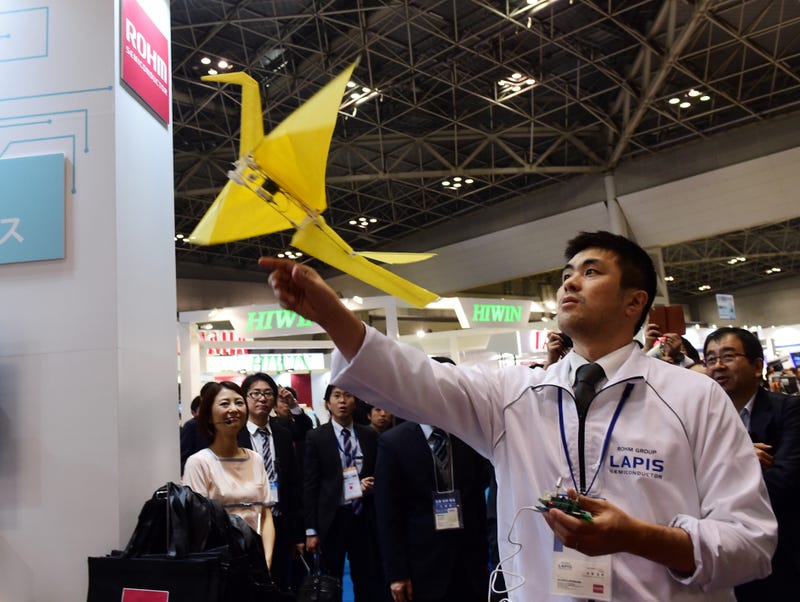
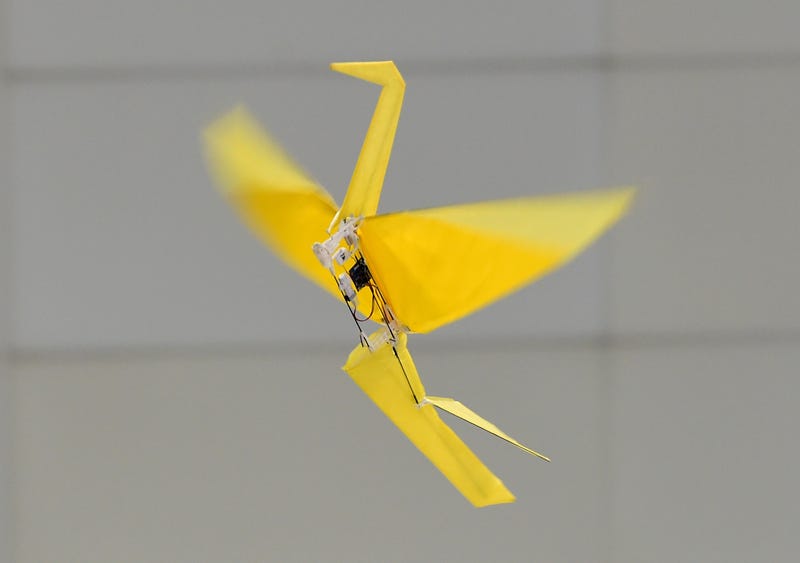
This remote-controlled origami crane weighs 31 grams (around .07 pounds) and was developed by Rohm Group, a Japanese electronics parts manufacturer. It’s called the Lazurite Fly, and we wrote about it when it debuted at Tokyo’s CEATEC emerging tech conference this fall. Its 3D-printed nylon body and carbon-tube frame make it extra light so it can soar weightlessly into the future.
Toyota’s Item-Fetching Helper Bot
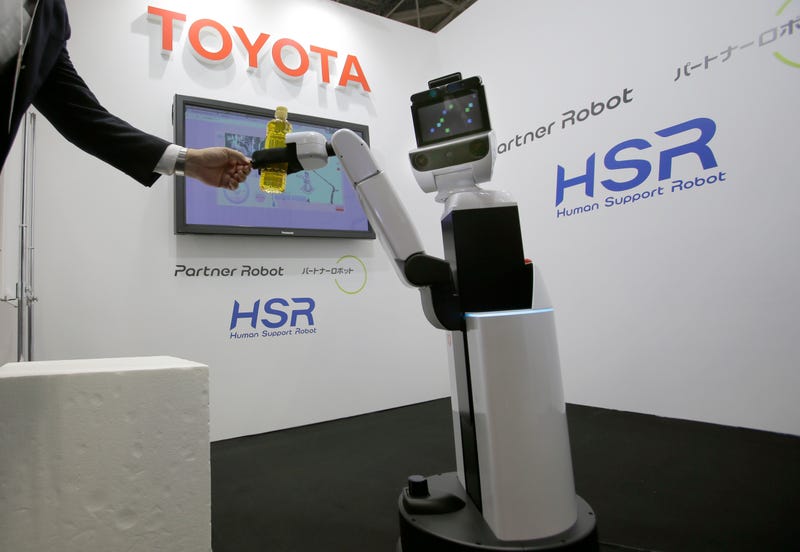
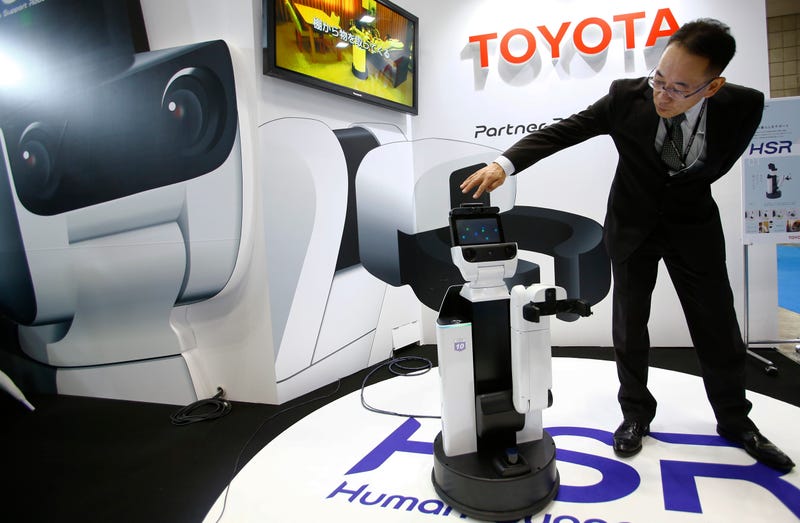
Toyota has made no bones about wading deeper into the robot world, and the company debuted this latest little creation during the show last week. The Human Support Robot, or HSR for short, picks up after humans, fetches them stuff and ferries it to their bedside, and even opens curtains—all of these tasks are useful for bed-bound patients or the elderly.
Credit: AP Photo/Shizuo Kambayashi
Baby-Shaped, Long-Distance Communicators
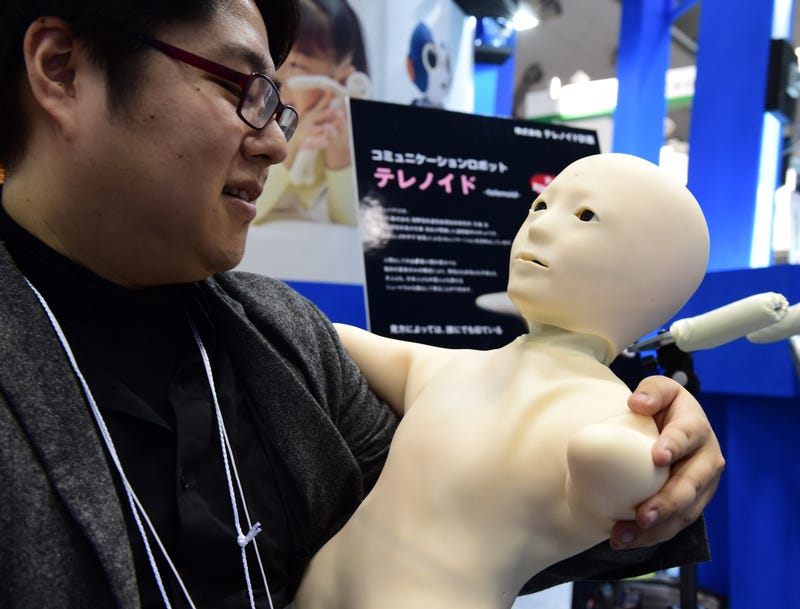
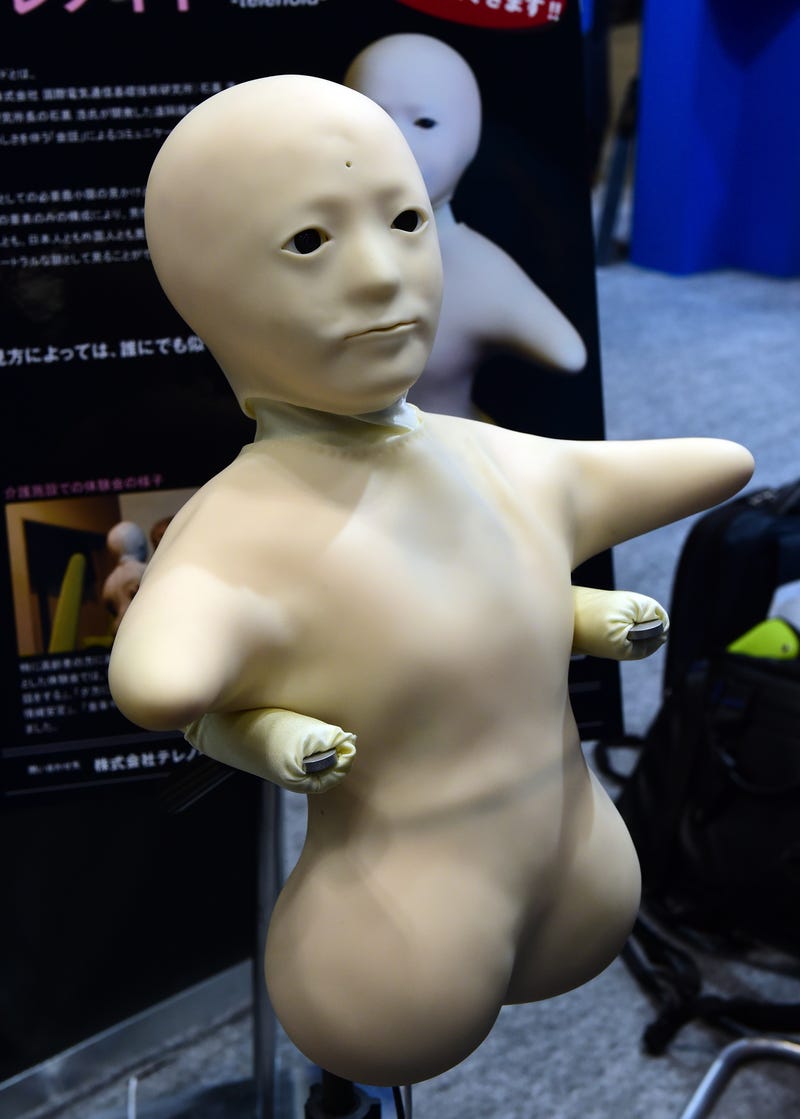
This child-shaped, talking robotic head-and-torso looks ridiculously unnerving, but never fear, it’s just a specialized communication concept. Called “Telenoid,” it’s supposed to “transfer” people’s “presence”—meaning, it’s like a soft vaguely human-shaped telephone. A faraway user speaks into an app and their voice is projected from the robot. Telenoid is designed by Osaka University professor Hiroshi Ishiguro, one of the most skilled robot makers in the world.
Rescue Humanoids for Disaster Zones
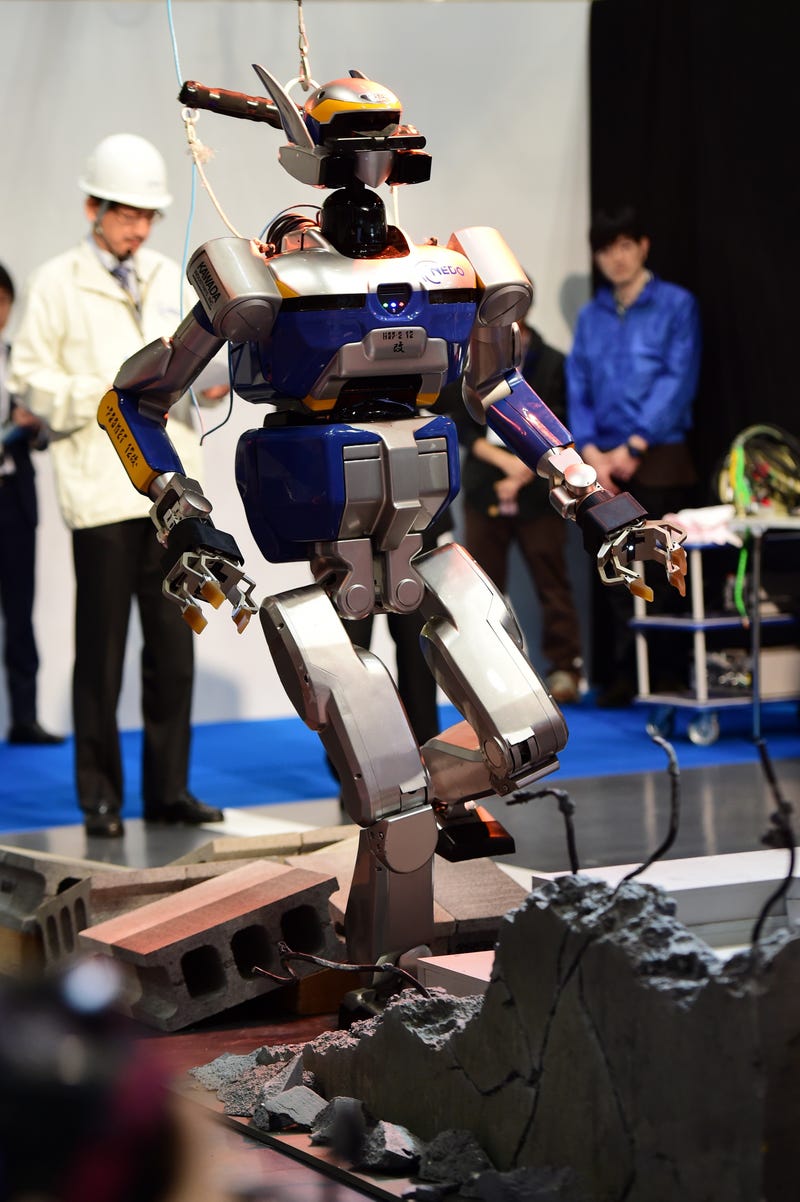
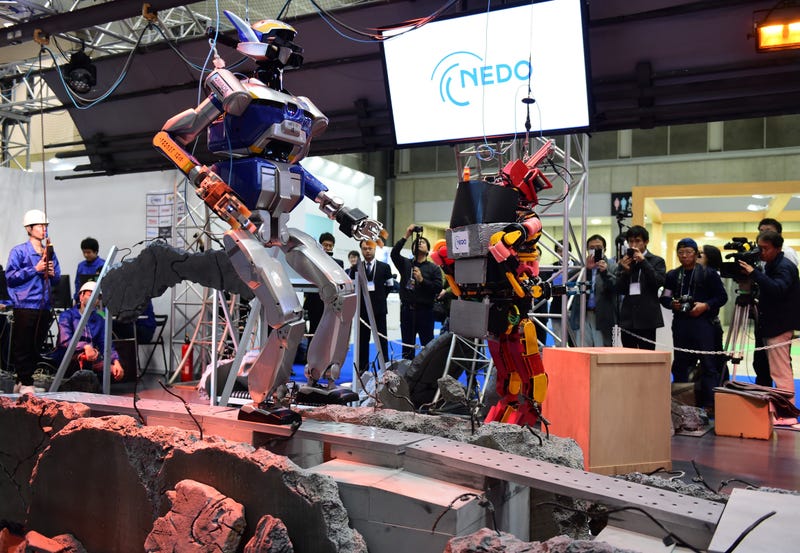

In between Fukushima fallout and being one of the most quake and tsunami-prone nations on Earth, Japan pursues robotics that are decidedly disaster-focused. Take Kawada’s humanoid HRP-2, seen here, navigating mock debris and walking across precarious materials you might find in a disaster-struck area.
GIF credit: Reuters video/The Star Online YouTube
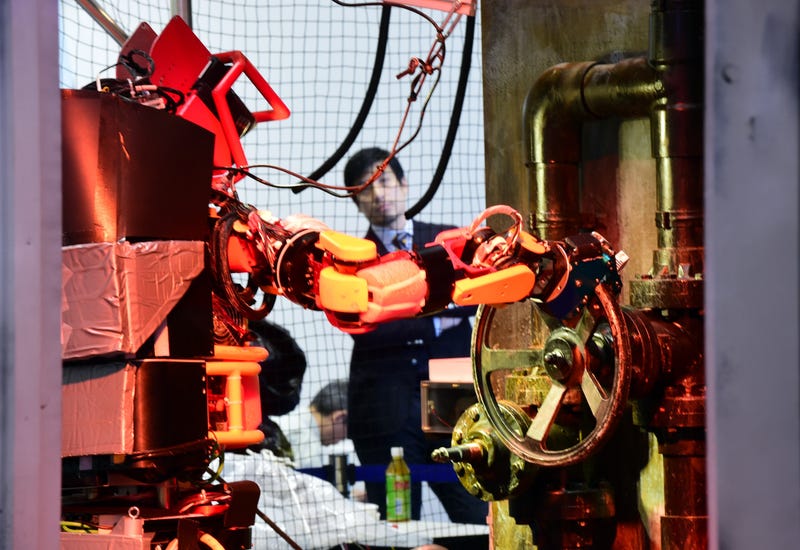
Here’s another humanoid bot with a disaster relief focus: The University of Tokyo’s Jaxon, which you see here performing the very human task of turning on a valve. Emergency response robots not only need to access places humans can’t—but when they get there, they also have to carry out tasks a human can do.
Hyper Realistic Androids of Dead Historical Figures

This wizened, Japanese-speaking Leonardo da Vinci bot was developed by the University of Osaka, Reuters reports. The goal here is to explore using androids based on historical figures to teach students about history.
GIF credit: Reuters video/The Star Online YouTube
Pepper
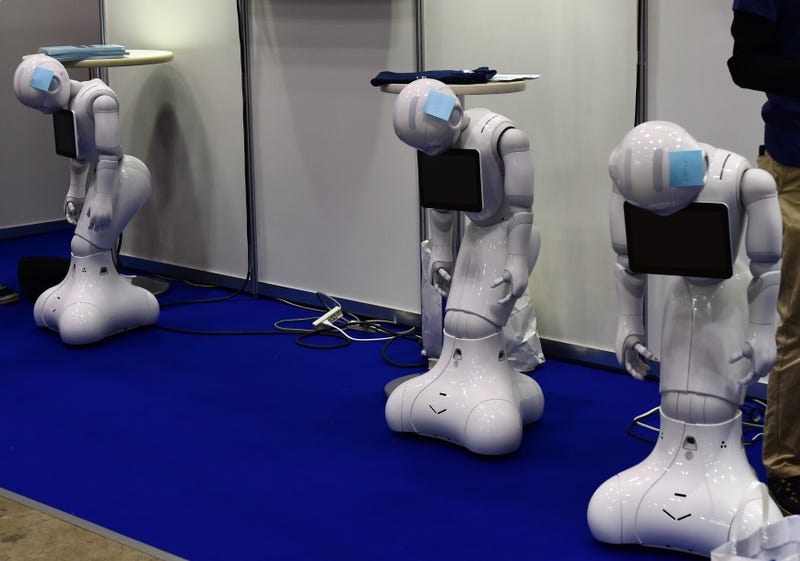
Here, we see a pack of Peppers “resting” before they take to the show floor. Pepper is the friendly, conversational humanoid that is able to read human facial expressions and emotions and change its behavior accordingly. A Pepper might, for example, tell you a joke when it notices that you’re sad. It’s a project by Japanese telecom giant SoftBank and French robotics company Aldebaran. Pepper will come to North America eventually
Powered Exoskeletons
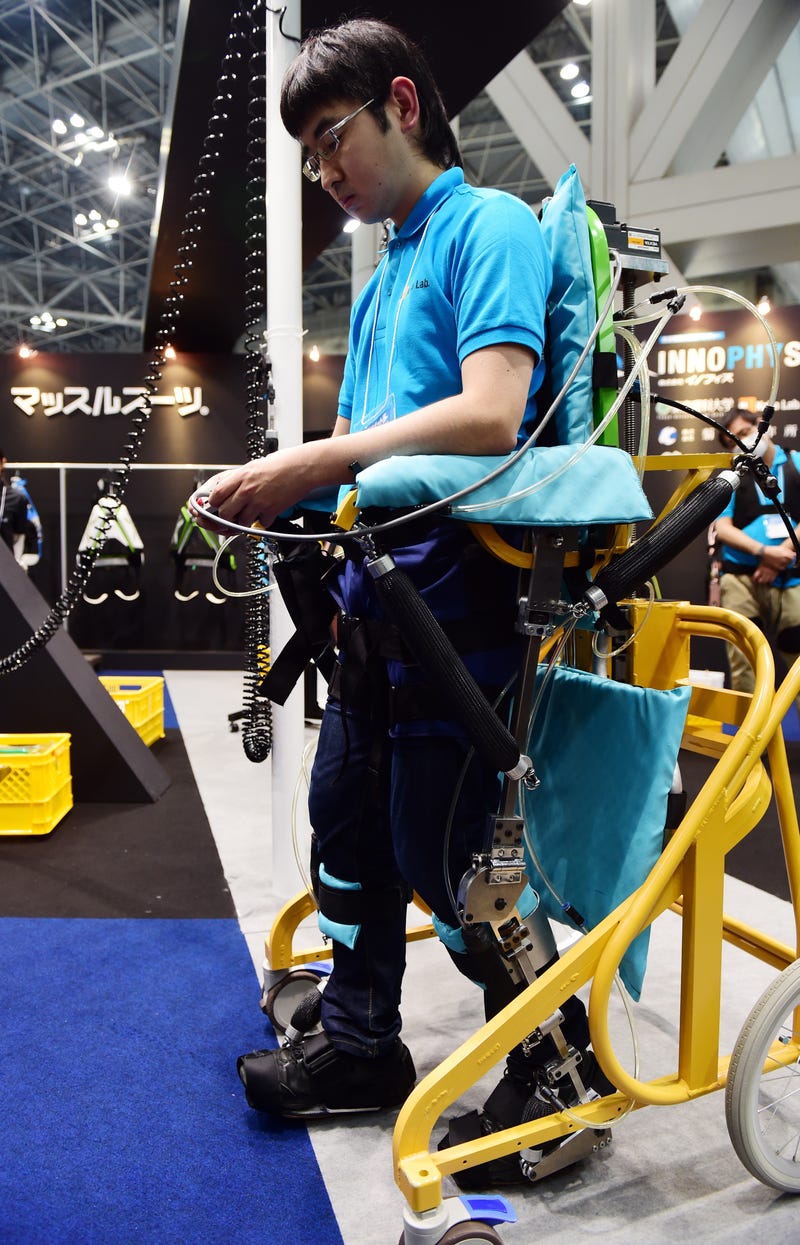

Powered exoskeletons like these—the top is one designed by University of Tokyo, the bottom one by elder care company Asahi Sun Clean—use compressed air to help folks walk or lift heavy objects. This is a boon to disabled patients, or for senior citizens. Japan’s population is the fastest aging in the world, so these auxiliary skeletons are of particular interest for the nation.
Moving Mannequins
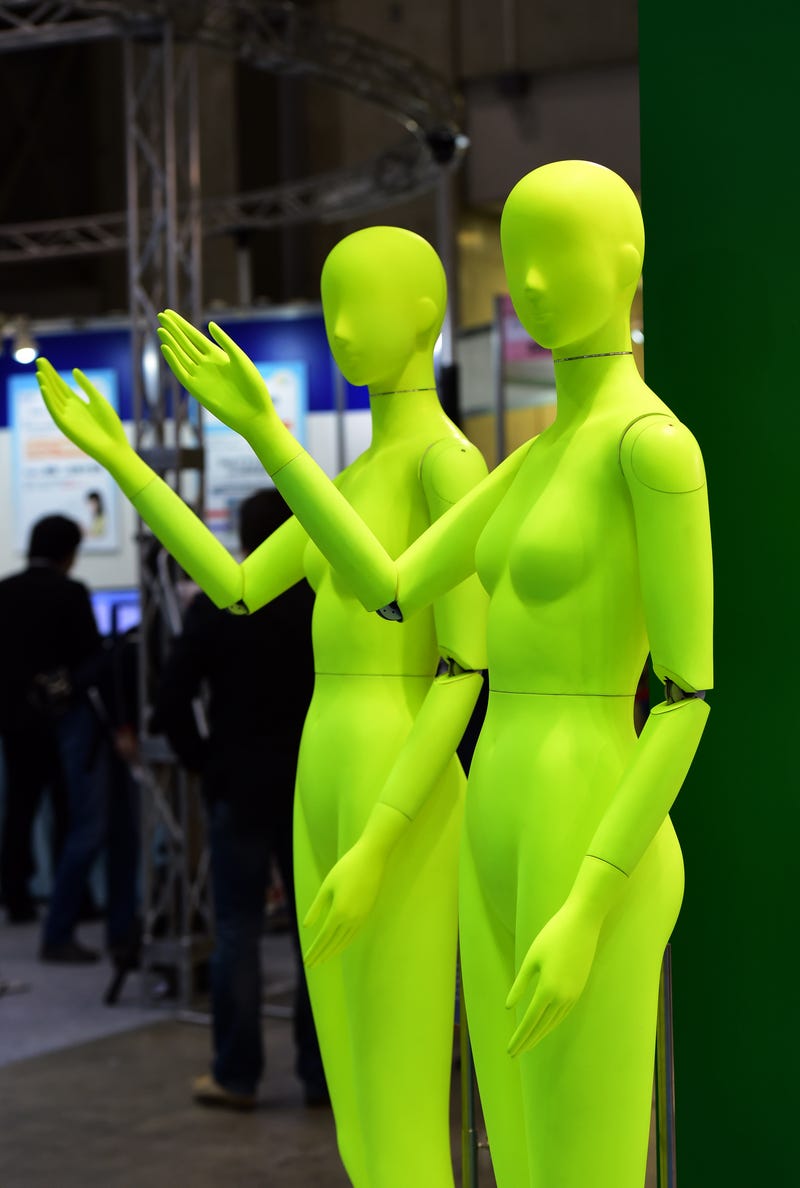

Introducing mannequins from the future. Designed by Japanese robotics company Muscle Corporation, these actually move and can strike different poses. (Sound familiar?) Japan is one of the first countries that’s been slowly rolling out robot staff in shops
Super Strong, Super Smart Industrial Lifters
Finally, check out this monster robot arm, seen here in a video filmed by YouTube channel Otoo TV. It’s an industrial robot from Fanuc Corp. that can lift this car without breaking an oil-sweat. The company is working on making industrial lifters that use deep learning to find and pick up heavy, randomly positioned objects with 90 percent accuracy, Bloomberg reports.
Photo credits, unless stated otherwise: Yoshikazu Tsuno/AFP/Getty Images
Top GIF credit: Otoo TV YouTube
Email the author at bryan@gizmodo.com, or follow him on Twitter.
An Hour-Long Look At What Made Sam Raimi's Spider-Man Movies Great

In our current age of mega-Marvel machinations and decade-long transmedia story arcs, it’s easy to forget what it was like before the Avengers assembled. Way back at the turn of the century, we got a pair of films that in many ways paved the way for the Marvel Cinematic Universe we know and love today.
Those movies, of course, were Sam Raimi’s first two Spider-Man films. The original was a colorful, optimistic shot in the arm that the otherwise gloomy comic-book movie desperately needed in the early 2000s. The sequel expanded on and more fully realized many of the ideas set forth in the original, while improving fundamentals across the board. (As we all know, Raimi made the first two Spider-Man movies and then stopped making Spider-Man movies. He most certainly did not make a third movie that failed to live up to the first two in almost every way. Nope. That did not happen.)
Raimi’s Spider-Man films were influential, sure, but they were also well-made, perfectly-cast films that captured a comic-book character in a way we arguably hadn’t seen since Christopher Reeve first suited up back in 1978.
I’ve been watching Moviebob’s film-crit series “Really That Good” for a little while now; the lengthy episodes make for fun watching when I’m taking a break for lunch. His newest episode focusing on Raimi’s first two Spider-Man films is as enjoyable as the rest, so I figured I’d share it.
Sometimes I get the suspicion that I enjoy Really That Good is because it congratulates me on liking the geeky blockbusters that I already liked… but then I’ll think about of Bob’s specific criticisms and observations, and in particular the way he places films within their specific cultural context, and I’ll realize that no, there really is a lot to be gained from giving this kind of movie a closer reading.
If this particular entry accomplishes nothing else, it will at the very least stand as a tribute to the timeless masterwork that was J.K. Simmons’ portrayal of J. Jonah Jameson.
To contact the author of this post, write to kirk@kotaku.com.
The Social Dynamics of Penguin Huddles Are More Complex Than We Thought
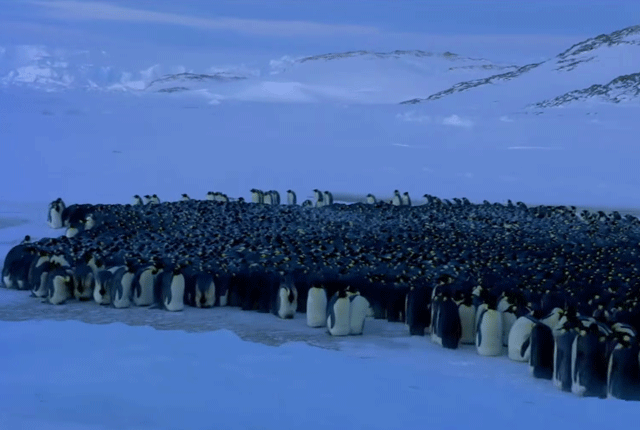
Emperor penguins huddle together for warmth during those punishing Antarctic storms, taking turns being at the center of the huddle. The social dynamics behind those huddles turns out to more complicated than previously thought.
Researchers at the University of Strasbourg in France studied 3000 breeding pairs of penguins in the Pointe Geologie Archipelago colony in Antarctica during the 2005, 2006 and 2008 seasons. They just published their results in the latest issue of the journal Animal Behavior. Most notably, they found that it only takes a single penguin leaving the huddle to cause it to break apart.
That’s in keeping with earlier work on how a single penguin can set off a “traveling wave” through the huddle. A few years ago, Daniel Zitterbart was in Antarctica conducting seismology research when he noted the huddling behavior of male emperor penguins, tasked with incubating the colony’s eggs. He thought it looked a lot like cell dynamics, so he videotaped the huddles and studied the time-lapsed footage when he returned home to the Alfred Wegener Institute in Germany. He found that huddled penguins don’t stand completely still. They move every minute or so, and when they do, all their nearest neighbors move with them.
Zitterbart likened the behavior to a traveling wave. Huddled emperor penguins move in similar patterns as heavy traffic inching along the freeway. When he adapted traffic flow models to the penguins’ behavior, he found that any given penguin can trigger a traveling wave; all it needs to do is step about 2 centimeters in any direction, and all its closest neighbors will do the same. He speculated that this so-called “threshold distance” is related to the animal’s layer of feathers: it’s twice as thick, allowing the huddle to pack together as densely as possible for warmth without crushing that feathery insulation.
Check out Zitterbart’s model of huddle behavior:
Given the bone-chilling temperatures the harsh Antarctic environment can reach, you’d think that once penguins get into a good warm huddle, they’d stay there. Instead, it seems that most huddles don’t last that long, according to Strasbourg scientist Andre Ancel, lead author on the latest study. He and his colleagues found that while some huddles held formation for several hours, others lasted just 10 minutes or so. On average, the huddles would break up around the 50-minute mark.
Why? It might have something to do with dispersing all that pent-up heat. It makes sense when you think about how the heat from all those penguin bodies must be building up, especially at the center of the huddle. Ancel et al. estimate that temperatures can be as high as 100 degrees there — a bit too toasty for a penguin’s comfort. In fact, “The breakup of huddles is sometimes accompanied by a haze of warm air rising over the colony, which indicates a significant dissipation of heat,” Ancel et al. write. They even observed some penguins eating snow after getting out of the huddle, presumably to cool off faster.
So the penguin at the center of the huddle doesn’t really have the sweetest spot, at least not once the heat starts to build. Yet the Strasbourg scientists found that while it only took one penguin to start a chain reaction that broke up the huddle — or, in one memorable case, two penguins getting into a fight — that penguin was rarely the one in the center. Usually it was a penguin on the edge of the huddle that peeled away first.
References:
Ancel, Andre et al. (2015) “New insights into the huddling dynamics of emperor penguins,” Animal Behaviour 110: 91-98.
Gerum, R.C. et al. (2013) “The origin of traveling waves in an emperor penguin huddle,” New Journal of Physics 15.
Gilbert, C. et al. (2006) “Huddling behavior in emperor penguins: dynamics of huddling,” Physiology & Behavior 88: 479-488.
Waters, A., Blanchette F., and Kim, A.D. (2012) “Modeling huddling penguins,” PLoS ONE 7: e50277.
Zitterbart, D.P. et al. (2011) “Coordinated movements prevent jamming in an Emperor penguin huddle,” PLoS ONE 6: e20260.
Image: Still from PBS’ The Gathering Swarms (2014).
This Philip K. Dick Tribute Is a Work of Mind-Fucking Greatness In Its Own Right

Philip K. Dick has had a huge influence on science fiction literature—but it’s pretty rare that you read a new book that manages to channel Dick’s paranoid, reality-warping mojo. So Black Hole by Bucky Sinister is a delight for all kinds of reasons. Spoilers ahead...
http://www.amazon.com/Black-Hole-Nov...
Bucky Sinister has been a fixture on San Francisco’s literary scene for years, doing insane, edgy poetry about drugs, robots, superheroes, and those moments when the walls of reality seem to melt around you. (We raved about his poetry before
I mention this backstory because there’s a huge autobiographical component to Black Hole, in the best PKD tradition. This is very much a book about being fucked up on weird drugs in an off-kilter, unreal version of San Francisco, and it draws on Sinister’s own narrative of being an addict and alcoholic before he finally got clean and sober. The book starts with a terrible portrait of what it’s like to go from being a young, swinging dude who’s partying with his friends, to being an old druggie loser. In fact, the first sentence of Black Hole is “Then one day, you’re the creepy old guy with the drugs.” (You can read the first few pages of the novel here.)
“But then you catch your reflection, and you’re the freak in the corner of some party where everyone’s half your age,” Sinister writes. “Sure, it’s cool that you’re there, you brought your own drugs and your shit’s so much better than what they usually have, but someone asks you what the 90s were like, and you’re telling them about the Pearl Jam Nirvana Red Hot Chili Peppers New Year’s show that you blew off because it was too mainstream, and someone else tells you that was the year they were born, and everyone looks at each other and laughs.” Ouch.

So Black Hole starts out as a mostly realist novel about being a drug addict in San Francisco, and realizing that not only are you suddenly not 21 any more, but also the city has changed a lot in the past 20 years while you were on a bender. But slowly, the book becomes weirder and more science fictional—and not in a “oh, the main character is hallucinating” way, but in a seamless fashion that feels somewhat futuristic and somewhat like heightened reality.
Chuck, the novel’s main character, manages to hold down a low-stress job with a biotech startup that clones miniature whales for insanely wealthy people who want to have a whale in their aquariums at home. (A miniature whale is still pretty frickin huge, though.) And he jaunts around from club to club and dealer to dealer, trying the newest, most bizarre drugs that the designer-drug makers can concoct.
Until Chuck finally discovers the drug called “Black Hole,” which gives the book its title and its theme. The actual side effects of Black Hole don’t become apparent for a while, but by the time they do, it’s already part of a whole chain of events that is causing everything to fall apart, on a fucking ontological level.
But the main point of this book is just a razor-sharp portrayal, livened by brilliant prose, of what it’s like to be stuck on the outside in a world that’s moving way too quickly. A lot of the book’s narrative power comes from the sense of constant disorientation, of not knowing how you got to someplace and where your shoes went and why you smell so bad.
In fact, you come away from Black Hole feeling as though reality is a lot more fragile than most of us like to think—something that you also get from a lot of Dick’s best work. And that there’s not that much difference, in the end, between an unraveling of causation and actually losing your goddamn mind. Either way, things stop making sense and following logically, and it’s sort of a toss-up.

All of the characters in Black Hole are deeply damaged, in ways that start out seeming pathetic but slowly become more creepy. Which leads me to one warning about this book: Sinister definitely reaches for a lot of grotesque imagery, and is happy to treat extreme body-builders and massively overweight people with the same degree of prurience verging on body horror. So if you’re sensitive to intense depictions of non-standard body types, this might bother you. This is also a book in which a man (who was allegedly brainwashed by the NSA) shows up naked in the street, covered with feces, and later has his arms nonconsensually amputated due to alleged gangrene. As ZYZZYVA says, “there’s something to offend everyone in Black Hole.”
But if you love Philip K. Dick—or hell, if you love any kind of science fiction that blends autobiographical material with world-melting strangeness—then you should definitely pick up Black Hole. It’s one of the weirdest books I’ve read lately, but it’s also compulsive reading, that kept me turning the pages at top speed. And the writing is not only beautifully honed, but intensely quotable.
Get Black Hole from Amazon, BN, Indiebound, Powell’s or Worldcat
Top image: Valencia St., 2011, photo by Jessica Watson/Flickr
Charlie Jane Anders is the author of All The Birds in the Sky, coming in January from Tor Books. Follow her on Twitter, and email her.